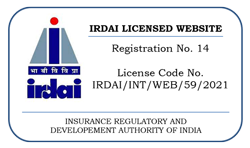Life insurance holds a crucial place in the financial landscape of India, offering individuals and families a means to secure their financial future against unforeseen events. Understanding the nuances of life insurance in India is essential for making informed decisions. This article aims to provide a comprehensive guide to navigating the world of life insurance in the Indian context.
Types of Life Insurance in India:
Term Life Insurance: This is the simplest form of life insurance. It provides coverage for a specific period (term) and pays out a death benefit if the insured passes away during the term.
Whole Life Insurance: This type offers coverage for the entire lifetime of the insured individual. It combines a death benefit with a savings component known as cash value.
Child Plans
Endowment Plans: These plans provide both insurance coverage and a savings element. If the policyholder survives the policy term, they receive a maturity benefit.
Unit-Linked Insurance Plans (ULIPs): ULIPs offer a combination of insurance and investment. Policyholders can invest in various funds based on their risk tolerance and financial goals.
Money Back Plans: These plans provide periodic payouts during the policy term, ensuring a regular income stream along with life coverage.
Pension Plans: Also known as retirement plans, these policies are designed to provide a steady income during ones retirement years.
Key Features and Benefits:
Death Benefit: The primary purpose of life insurance is to provide a death benefit to the beneficiaries in case of the insureds demise. This financial support can be crucial for the familys well-being.
Tax Benefits: Premiums paid towards life insurance policies are eligible for tax deductions under Section 80C of the Income Tax Act, and the maturity or death benefits are tax-free under Section 10(10D).
Loan Facility: Some life insurance policies allow policyholders to take loans against the policys cash value, providing a source of liquidity during emergencies.
Wealth Creation: Certain policies, like ULIPs and endowment plans, offer a way to accumulate wealth over time through investment components.
Riders and Add-ons: Policyholders can enhance their coverage by opting for riders like critical illness cover, accidental death benefit, and more.
Choosing the Right Policy:
Assessing Coverage Needs: Evaluate your financial responsibilities, such as loans, family expenses, and long-term goals, to determine the appropriate coverage amount.
Premium Affordability: Consider your budget and ensure that the premium payments are sustainable over the policy term.
Policy Duration: Decide on the term of the policy based on your financial goals and the stage of life you are in.
Comparing Policies: Research and compare different policies, their features, charges, and benefits to find the one that aligns with your needs.
Claim Settlement Ratio: Check the insurance companys claim settlement ratio to gauge their track record of honoring claims promptly.
Insurance Regulatory and Development Authority of India (IRDAI):
IRDAI is the regulatory body overseeing the insurance sector in India. It ensures fair practices, consumer protection, and stability in the industry. Before purchasing any policy, ensure that the insurance provider is IRDAI-approved.
In Conclusion:
Life insurance plays a vital role in securing the financial well-being of individuals and families in India. With a range of policy options available, its important to choose wisely based on your specific requirements and financial goals. Consulting with insurance experts or financial advisors can provide valuable insights to make an informed decision. Remember, life insurance is not just a financial instrument; it is a way to provide a safety net for your loved ones, ensuring their future remains secure even in your absence.




